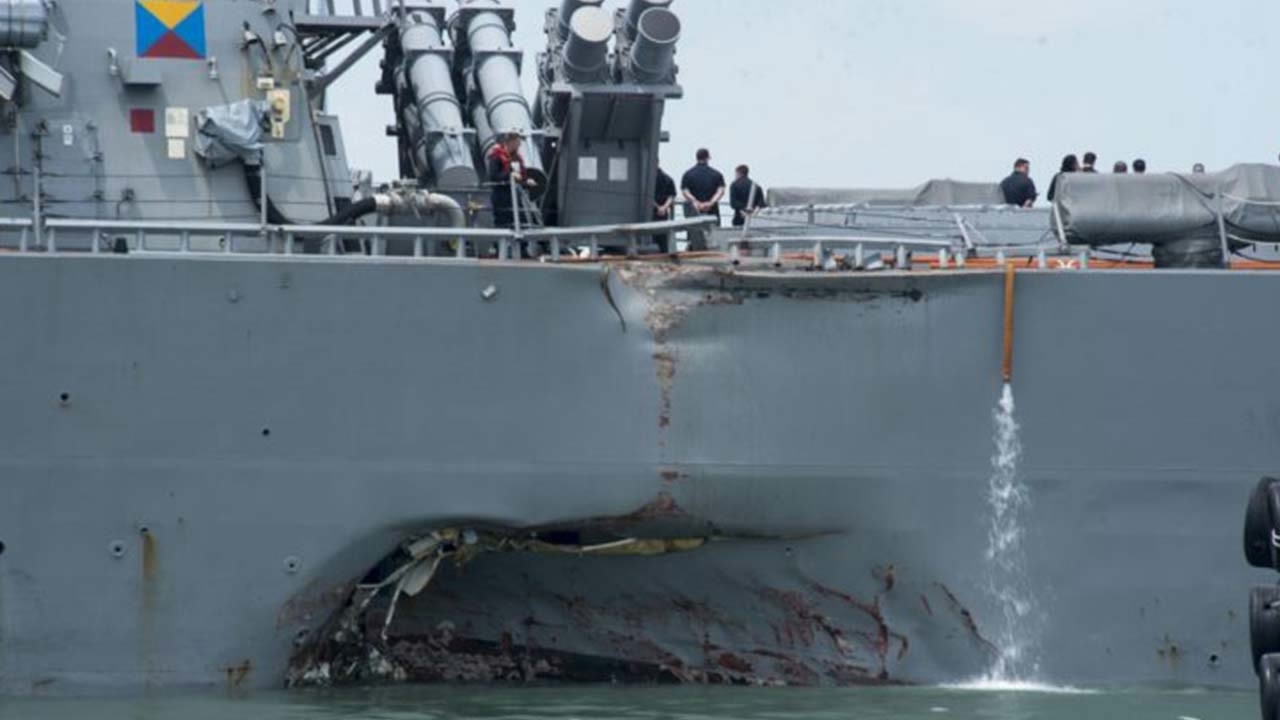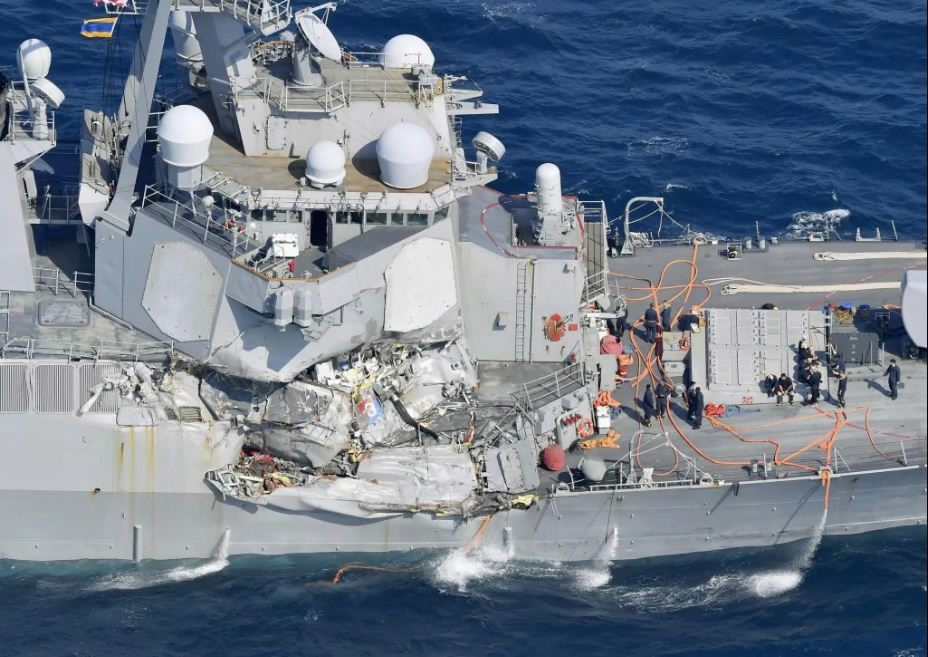
Politics
08:15, 28-Aug-2017
State of the US Navy: Readiness questioned after two deadly collisions
By Giles Gibson

Collisions at sea, especially those involving advanced warships, are rare. But two collisions involving the US Navy in the last two months prove there can be exceptions.
After a series of accidents in Asian waters this year, the Navy is down two ships in a volatile part of the world.
Jan van Tol, a former US Navy Captain, guided warships in the same seas where the latest collision occurred. According to van Tol, the recent incidents may have been avoidable.
"Standard practice, when you go through a narrow straits like that, is to have specially augmented launches, navigation detail, maybe an extra lookout or two," van Tol explained. "One of the things that puzzles me the most in the two collisions is: where was the lookout? It seems to me the lookout should have been screaming at the bridge there's something big, close and gaining."

The damage on the starboard side of the USS Fitzgerald is seen off the coast of the southeast Japanese city of Shimoda. /AP Photo
The damage on the starboard side of the USS Fitzgerald is seen off the coast of the southeast Japanese city of Shimoda. /AP Photo
Earlier this month, the USS John S. McCain collided with an oil tanker in the Strait of Malacca. The ship was towed to Singapore's Changi Port and will be out of action for an extended period of time. At the same time, its sister ship, the USS Fitzgerald, remains in dry dock in Japan after its collision in June.
Both ships are equipped with Aegis ballistic missile defense systems. This means that while on active patrol, they would be capable of shooting down short and medium range missiles from the Korean Peninsula, as well as tracking longer range missiles.
Earlier this month, the USS John S McCain also reportedly conducted a so-called "freedom of navigation" operation near islands in the South China Sea. China sees these operations as provocative and a threat to its sovereignty.
US President Donald Trump has vowed to give his military leaders the tools they need to plan for future defense commitments. Military analysts in Washington, however, blame overly-stretched naval resources for the recent collisions.
"When there's a mismatch between resources and operations, for a while you can bridge that gap simply by running the Navy and the sailors harder than they're capable of sustaining," according to Christopher Harmer, a senior naval analyst and former Navy commander. "Eventually you run up to a hard stop where the ships are worn out, the crews are worn out. They've got too much tasking and not enough support. That’s the point where we're at now."
Meanwhile, Admiral Harry Harris, the head of US Pacific Command, has insisted the recent setbacks won't affect the Navy's ability to defend its allies, including South Korea. Military officials say the US has more than a dozen other Aegis-equipped ships in the region.

SITEMAP
Copyright © 2018 CGTN. Beijing ICP prepared NO.16065310-3
Copyright © 2018 CGTN. Beijing ICP prepared NO.16065310-3